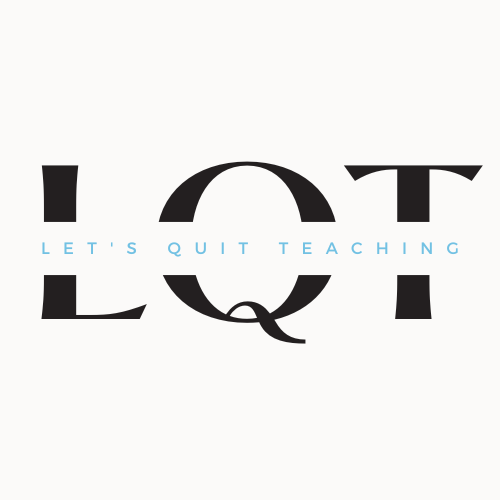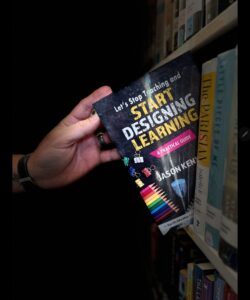If there is one thing that I could ask 100 different educators and get almost 99 different responses, it is this question: What is your definition of differentiation? Differentiation is one of those ambiguous edujargon words that so many find vague, confusing and overcomplicated. Yet, this word appears on countless classroom observation sheets and is written into state standards for professional educators. If no one gets what it is or can pinpoint a solid definition, how can we look for it in the learning we are providing our learners or support our staff in developing their abilities around it? We’ll get to it, but let me tell you about what happened at McDonald’s.
Quarter-Pounder Craving
While traveling out of town, I was afflicted with my annual craving for a Quarter Pounder with Cheese. I happened to be hungry and happened to be near a McDonald’s, so I pulled into the drive-thru and made my order. Just a standard Quarter Pounder with Cheese. Leaving the drive-thru with hamburger in hand, I took the first bite and instantly knew something was off. Unwrapping the sandwich, I noticed that it looked alright from the outside, but removing the top bun I noticed a flat chicken patty where a quarter pound beef one should be as well as sriracha instead of the standard ketchup.
Making the u-turn, I walked into the restaurant and was greeted by the manager to whom I expressed my dilemma. He had someone immediately begin making a replacement while we had some small talk. He learned I was in education and explained the reason for the error in my previous order. “Well, the new employee we hired had a 504 back in school, so…” He then asked, “Hey, what would you do to help an employee like this become better at producing consistent, successful food?”
By now, you might have realized this didn’t REALLY happen, but I would like you to take a minute to consider the question. Let’s say McDonald’s hires you as a consultant for their employees who have been “identified” in some way. What would you do to assist them in the process of churning out consistent, high-quality Quarter Pounders every single time? Take two minutes and make a list. No, really. Do it.
TWO MINUTES HAVE PASSED
Looking at your list you may have jotted a dozen or so things you could do to help these employees. Things like: labeling ingredients with pictures, recipe cards, video tutorials, peer monitoring, modeling, reflection on practice and a myriad of other supports. So moving forward, McDonald’s now has an arsenal of tools at their disposal for employees with 504s, IEPs, scores in the lower quartile or any other “label” you’d like to add, to churn out consistently tasty and correct hamburgers. In the education world, what you did in just two minutes was to create scaffolds.
Scaffolds ARE Differentiation
I don’t even use the word “differentiation” when talking to staff, I use scaffolds. Why? Because that’s just what scaffolds are. They are supports we put into place for individual learners during the instruction or during the work of the learning task. Scaffolds are created only when the task or instruction is impossible for learners without that support. They are tailored to the individual needs of the learner. They are temporary and meant to be faded out, and scaffolds show every learner that success is attainable.
When we keep these four qualities in mind while designing scaffolds for our learners, we are providing the differentiation in the instruction or the task work needed for them to be successful. This is the groundwork of equity. Giving every learner what they need through scaffolds they can access to rise to the level of the standard no matter the circumstance, background knowledge, opportunities or advantages. Scaffolds are how we differentiate and level the learning field at the same time.
Scaffold with a Purpose
Scaffolds must be designed for and used in the room for learning, that’s how we guarantee differentiation resulting in equity. Just with the supports you listed for the fast food worker earlier, you identified the need or purpose and created a scaffold. Some of your scaffolds happened at the front end, before learning or the task. Some happened with a peer involved. Others happened in “real-time” when a need arose while other scaffolds happened after the events. It is no different in the classroom.
But we have to be intentional and purposeful with our scaffolds. For example, if we give them out on the front end, we risk lowering rigor or providing scaffolds for everyone instead of those who need them. Peer scaffolds run the risk of misinformation or overhelping. Real-time scaffolds are difficult to predict and premake. However, when we design scaffolds with an intended purpose in mind for an intended receiver, we are providing tailored supports for the learner to be successful. We are providing “different” instruction or learning task experiences for learners. That is differentiation.
Let’s stop trying to explain differentiation as a complex and overcomplicated process. The answers to every learning question are in your school building. Pose the hamburger question at your next meeting and see how many scaffolds are created. Then, change the subject from Quarter-Pounders to two-step equations or narrative essays. Watch teachers come up with just as many scaffolds. Differentiation is doable. Use scaffolds to drive it and the work around it.


